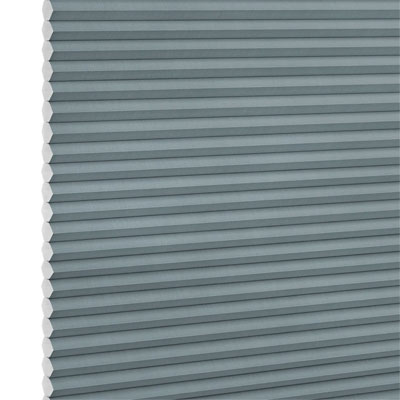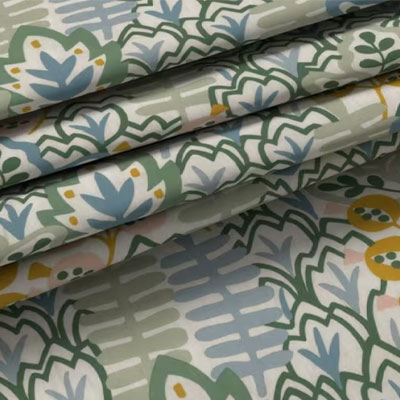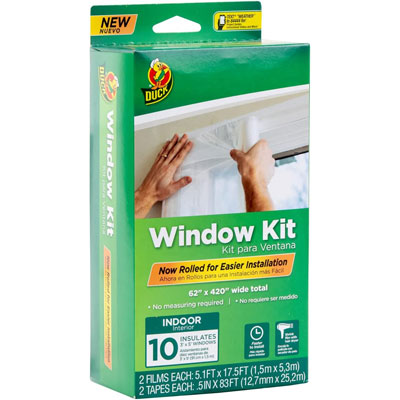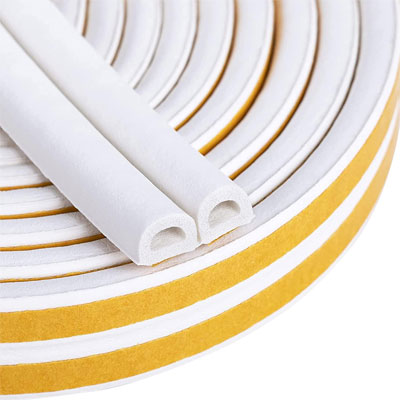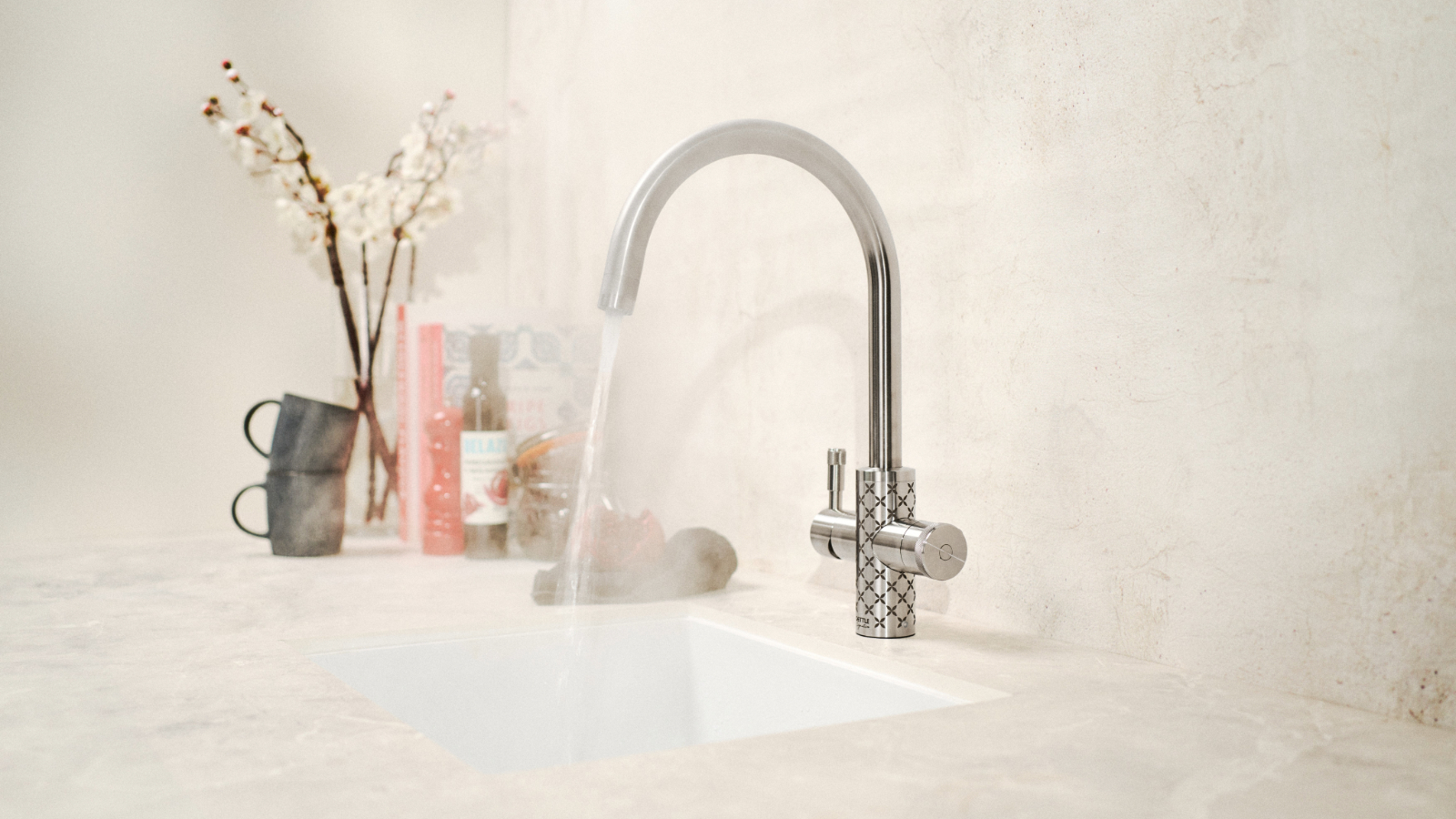Beat the chill this winter with the best window coverings to keep cold out and warmth in
As a common culprit of heat loss and draughts, addressing your choice of window coverings is key to keeping your house warm and toasty – we explain the best options out there
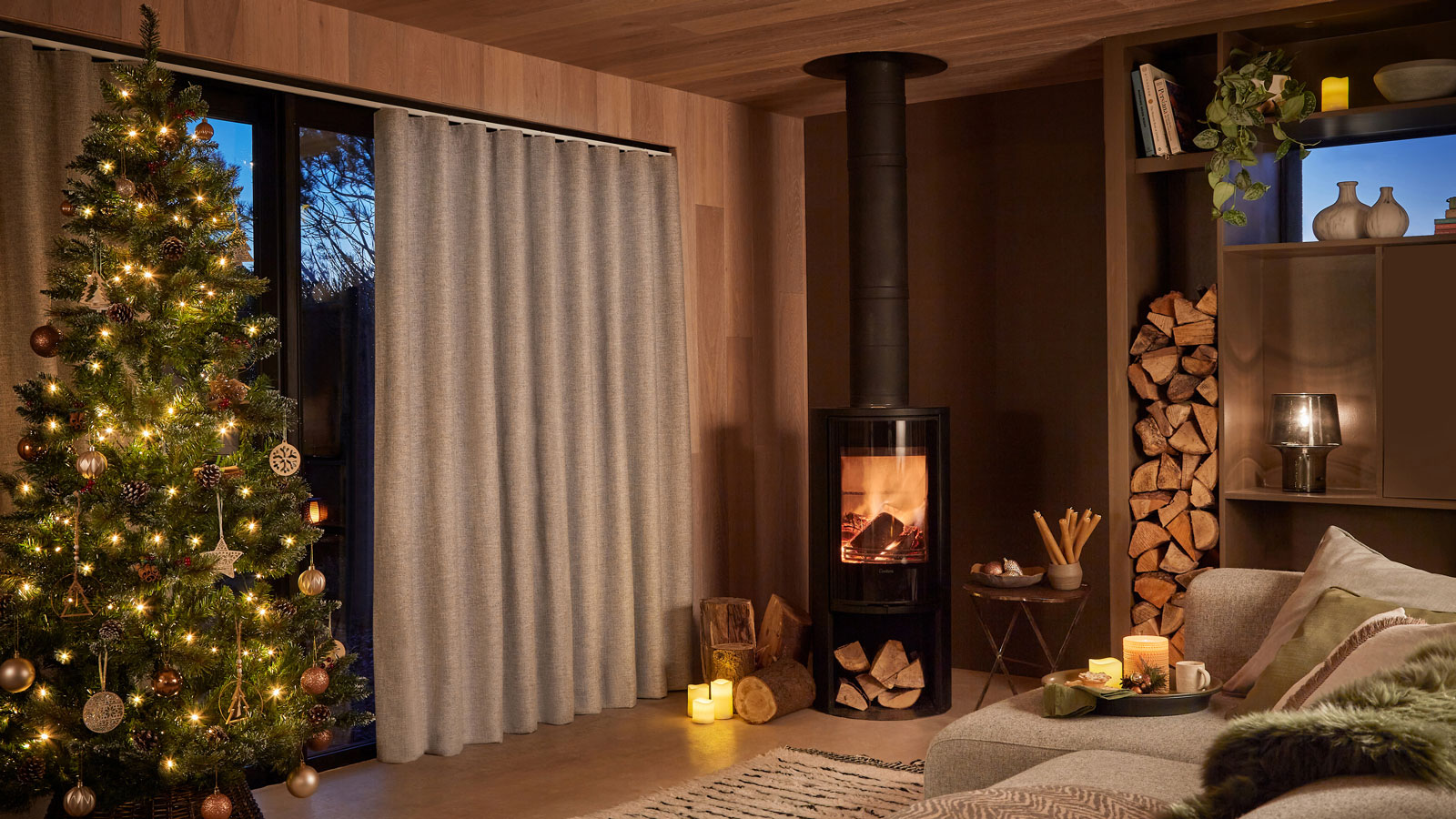
Now that the summer is just a distant memory, the search for window coverings to keep cold out has begun for many homeowners. While curtains and blinds are often chosen for the decorative impact they will have on a space, it is important to note the role they can play in keeping a house warm too.
There are many steps you can take when it comes to draught proofing windows, but certain dressings and coverings are definitely better than others at keeping out the chill.
We took a look at the most effective window coverings for blocking draughts and minimising heat loss so you can keep your home feeling warm and cosy throughout the colder seasons.
How do window coverings help insulate a room?
Before choosing the right type of window covering for your room, it is useful to understand how certain fittings work to keep a space feeling warm. It is actually quite simple.
Once cold weather hits outside, blinds and curtains prevent heat loss inside by forming a layer of air between the room and the window. This insulating pocket helps to stop warm air escaping from the room as well as blocking draughts from getting in. The thicker the material you choose for your window coverings and the more snugly it is fitted around the window, the better.
Other types of window treatments, such as shutters, when fitted tightly, prevent draughts from getting through.
1. Thermal curtains
While any curtain is better than none when it comes to keeping out the cold, some are more effective than others.
Bring your dream home to life with expert advice, how to guides and design inspiration. Sign up for our newsletter and get two free tickets to a Homebuilding & Renovating Show near you.
Unlike standard single-layer curtains, thermal varieties are made up of multiple layers, each with a thermal lining sandwiched between. Heat transfer is prevented thanks to the pockets of air that become trapped between the layers.
When choosing thermal curtains, be on the lookout for those made from heavier fabrics, take accurate measurements to ensure they fit well and opt for full-length designs that extend all the way to the ground – this will also add a luxurious look to your bedroom window ideas.
"Heavier curtain fabrics such as velvet or wool blends are particularly good at blocking draughts, and they also add texture and depth to a room," adds Yvonne Keal, senior product manager at Hillarys.

Shop thermal curtains
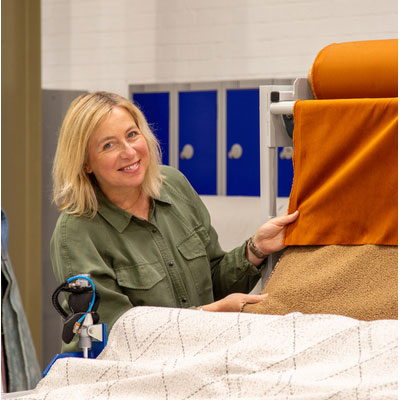
Yvonne is a product management specialist with over 20 years’ experience in the interiors industry. Since joining Hillarys in 2003, Yvonne has successfully launched many window dressing collections, including roller blinds, vertical blinds, Roman blinds, curtains and voiles. She is passionate about improving the sustainability of products, by continually improving materials. Yvonne provides practical advice to help customers better understand which styles are best for their windows.
2. Thermal blinds
Just like thermal curtains, thermal blinds are specially designed to prevent both heat loss and overheating. Some feature thermal linings, while others rely on a honeycomb-like, cellular structure.
"If you’re looking to reduce heat loss through glazing, thermal blinds are one of the most effective solutions," says Simon Browne, product expert at Luxaflex, who goes on to suggest using a product such as Luxaflex® Duette® blinds. "Their honeycomb structure traps air in individual pockets, creating a thermal barrier that can cut heat loss by up to 55%,' says Simon.
"They're especially useful in living rooms with large windows, or in glass extensions, where traditional curtains or blinds might not be suitable," continues Simon. "And because they’re available as smart electric blinds, you can programme them to open and close at set times – or even link them to your smart heating system. That means they can automatically close when the heating comes on, helping to retain warmth and reduce energy waste.”
"Roman blinds with thermal linings are a great option," adds Yvonne Keal. "They sit close to the window and help reduce heat loss. Layering them with thick, lined curtains adds another level of insulation and creates a warm, inviting feel that’s ideal for winter."
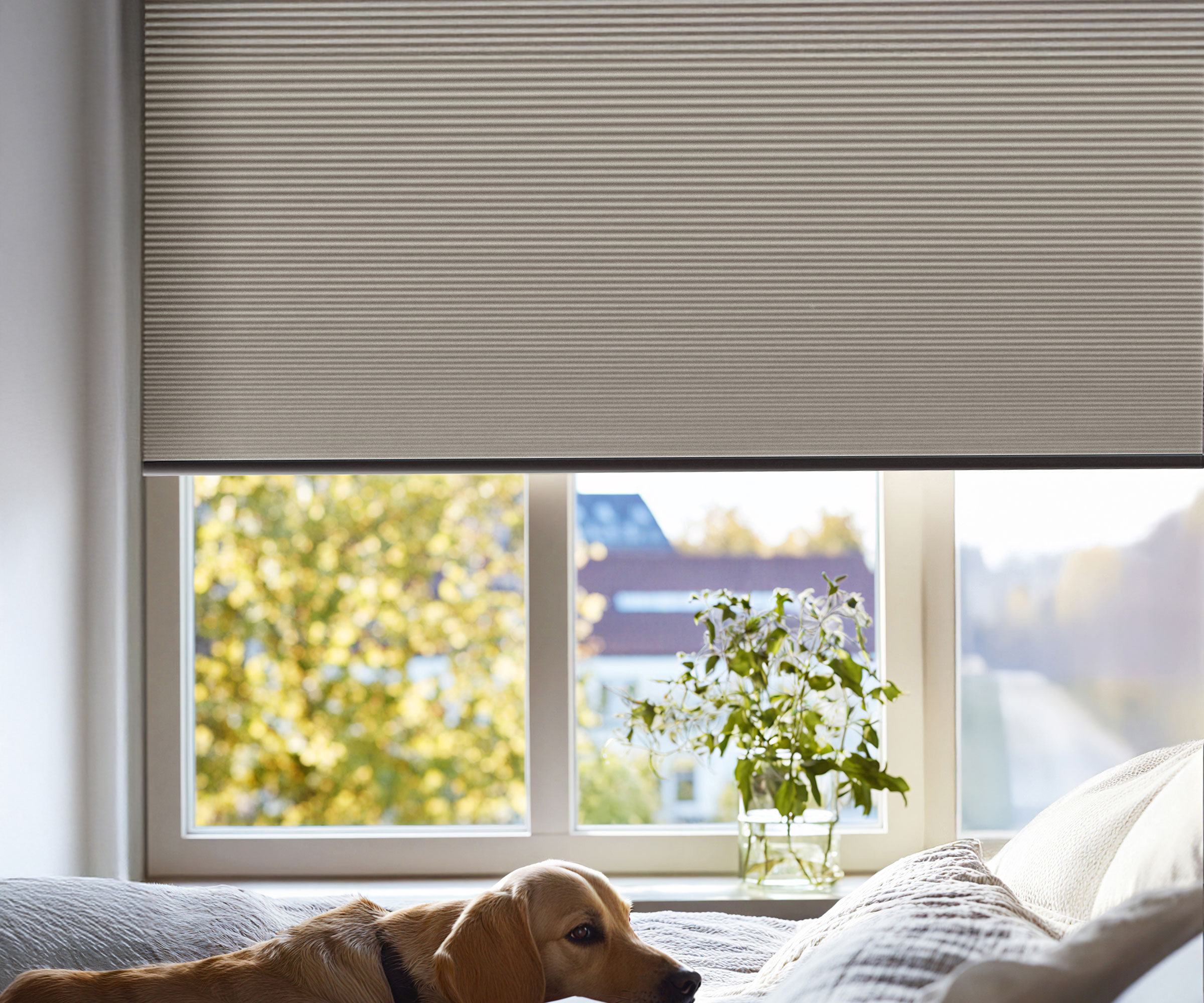
Shop thermal blinds

With over 27 years' experience, Simon Browne is an award-winning training expert and a leading authority in the UK window blinds market. As product specialist at Luxaflex UK, he has helped shape the industry’s approach to smart shading through dealer training, product launches, and customer-focused strategies. Simon was instrumental in bringing PowerView automation to market and continues to lead national training programmes that elevate product expertise across the sector.
3. Window shutters
Window shutters are a stylish and practical way to keep out the light and provide privacy – plus they can be a better option than hanging curtains in a kitchen, where easy-to-clean finishes are key. However, can they help when it comes to keeping cold draughts from windows penetrating a room?
"Shutters are a bit like a winter coat for your windows," says Adam Turnbull, director at Cathedral Shutters. "They give you that extra layer that keeps the warmth in and the draughts out."
"For a more structured look, shutters are a brilliant choice," adds Yvonne Keal. "They fit snugly to the window frame and help seal in warmth, especially in older homes where draughts are more common. It’s about combining practicality with style.”
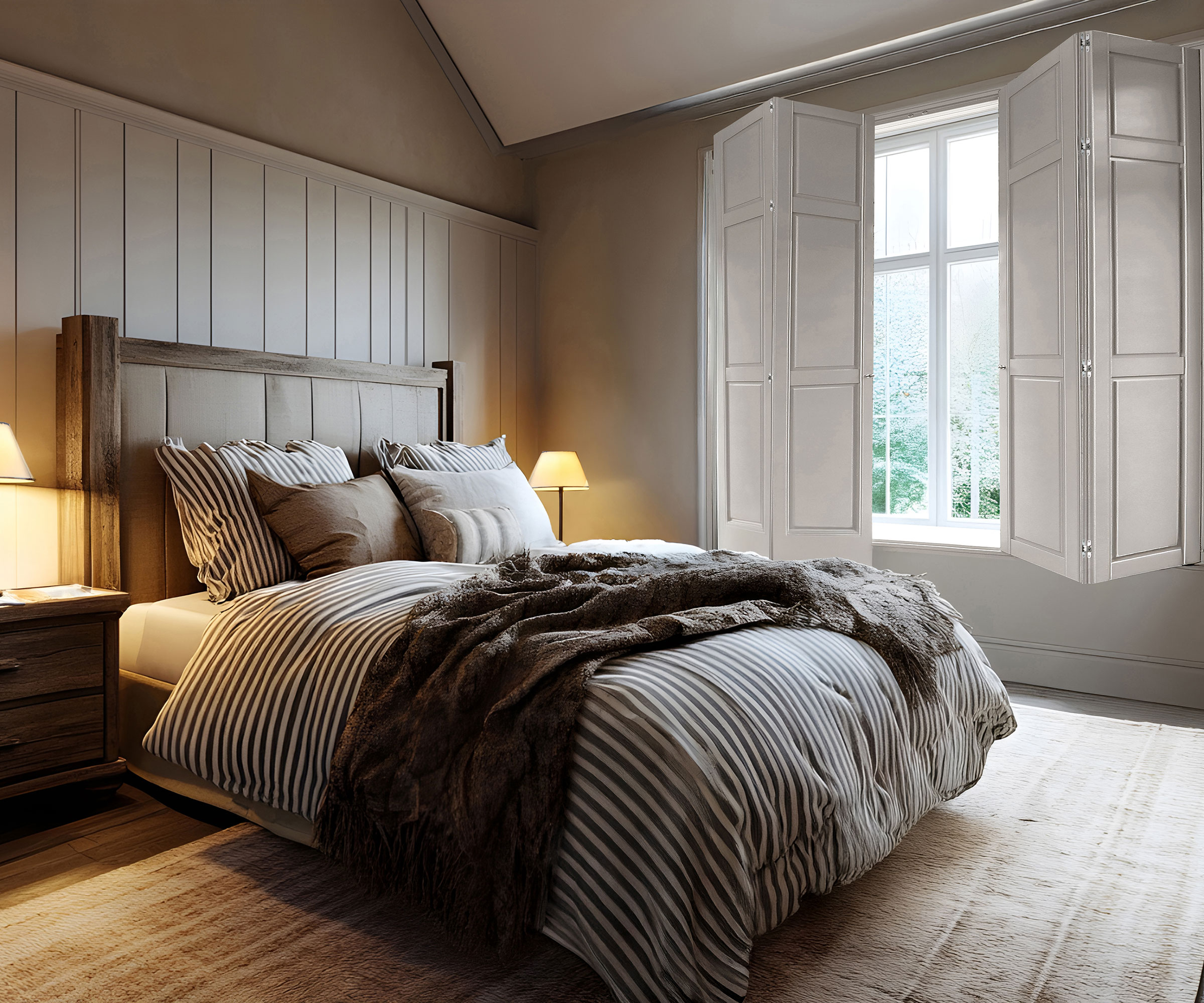
4. Secondary glazing
The right window coverings such as blinds and curtains can make a huge difference to keeping the heat in during colder months, but assessing the windows themselves and considering window repair or upgrades can make even more of a difference.
"Measures such as thermal blinds or lined curtains can be of some benefit in reducing heat loss, mainly by keeping warm air trapped in the room and draughts out," picks up Andrew Haydon, director at Simply Plastics. "However, they don't tackle the root of the issue, which is often the performance of the glass itself, as despite thick curtains, heat can still be lost through single-glazed windows or older pieces of glass.
"It's here that secondary glazing can provide a more direct improvement," continues Andrew. "By forming an air gap between the window and an added acrylic panel, it minimises conductive heat loss through the glass, just as double glazing would. By layering up window coverings with something that addresses the window surface heat loss, such as secondary glazing, you can save far more heat than one solution alone."

Andrew Haydon is a DIY and home improvement expert at Simply Plastics, where he helps homeowners create practical, affordable upgrades using durable, energy-efficient materials. With hands-on experience spanning everything from garden structures to glazing and window insulation, Andrew specialises in simple, low-cost ways to make homes more comfortable and energy smart all year round.
5. Thermal insulating window film
If secondary glazing costs are a little high for your right now, thermal insulating window film kits are well worth considering and can be surprisingly effective when used in combination with some of the other methods mentioned.
"Window insulation kits can be a useful temporary measure, particularly during colder seasons," says Andrew Haydon. "However, while 'clingfilm-style' products do cut down on draughts, they may have to be replaced every year. More robust alternatives, such as solid acrylic panels in secondary glazing kits, provide a superior seal and long-term value, as well as providing extra benefits such as blocking outside noise. For those wanting to add insulation without going for complete window replacements, they offer a low-intervention and effective solution that can help save energy."
Most window insulation kits are easy to fit on a DIY basis – just cut them to size, stick them on and use a regular hairdryer to shrink them to fit the window.
5. Draught proofing measures
In addition to window coverings, there are other, super simple, draught proofing measures you can take to help stop cold breezes coming into your home – as well as keeping the warm air you are paying to generate in. Many of these can also help with soundproofing.
Plug up gaps between windows and frames using weather strips, many of which are self-adhesive and are designed to be cut to the required size. You could also consider using weighted draught excluders along window sills to prevent incoming breezes.
There are other measures well worth taking too which, although small, can make all the difference to the comfort levels within your home.
"Do not obstruct radiators with long curtains, and shut window coverings at nightfall to retain the heat," advises Andrew Haydon. "In the daytime, allowing sunlight in can passively warm the area as well."
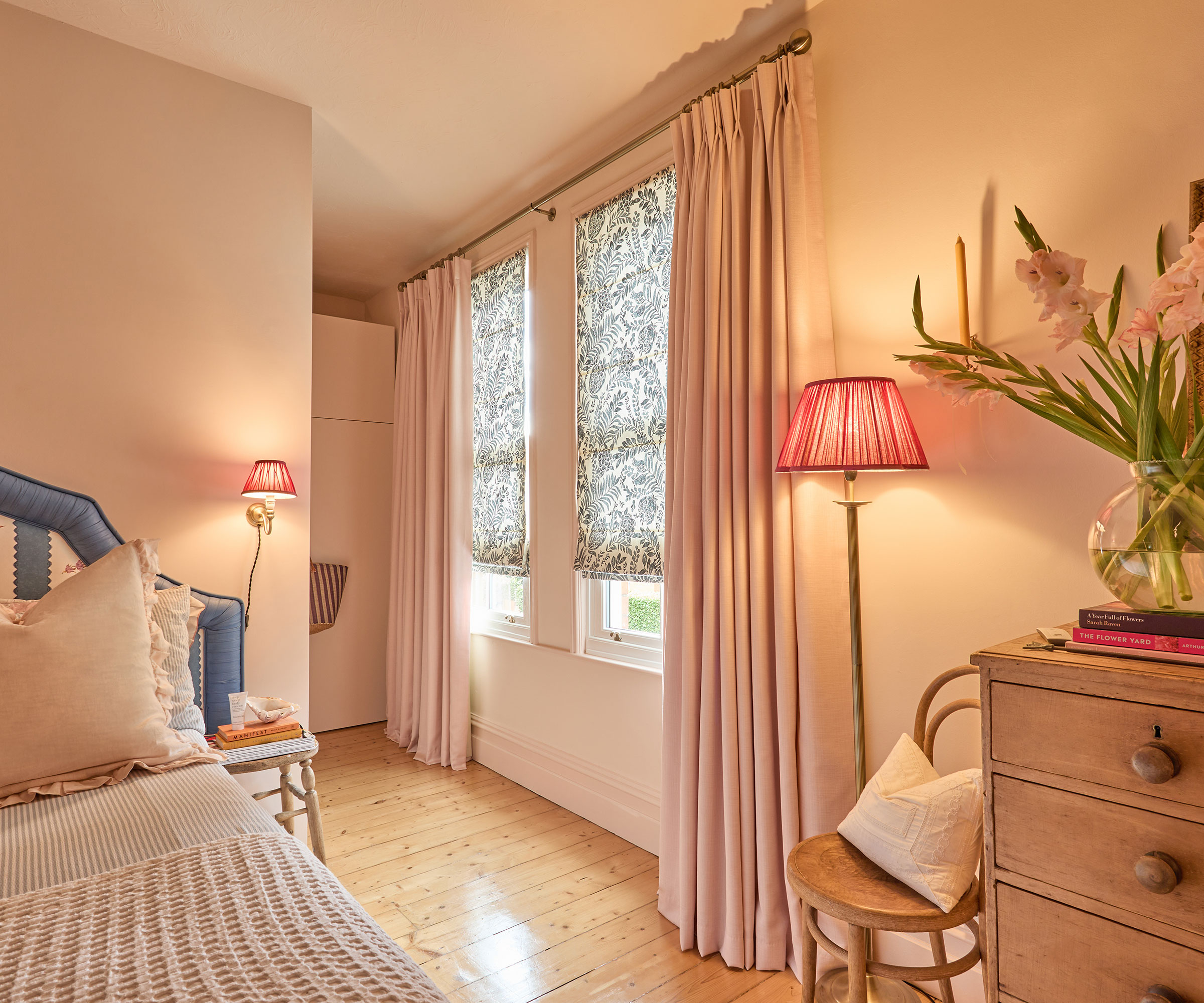
FAQs
How can you maximise the effectiveness of thermal window coverings?
In order to make the most of your new investments, our experts have some tips on maximising their effectiveness.
"A combination of thermal window treatments with other measures is key," explains Andrew Haydon. "For instance, installing lined curtains or insulating blinds together with secondary glazing will minimise both radiant and convective heat loss. The glazing takes care of heat loss in a house via the glass itself, and the curtains will assist in keeping warm air within the room."
Is secondary glazing as good as double glazing?
If you are renovating a house with very old windows, it may well be worth considering replacing them with something more energy efficient, although this will obviously come at a cost – with triple glazing costs sitting at the top of the price scale. For this reason, many people opt to fit secondary glazing instead – but will it suffice?
"Secondary glazing cannot equal the thermal performance of new triple glazing, although it can provide a significant improvement in insulation at a fraction of the cost," explains Andrew Haydon. "It's an especially good option for those looking to cut heating bills in the short to medium term, or in buildings where replacements are not feasible, such as listed homes. However, for those with even a small budget, it could be worth slowly replacing windows in key areas, starting with high-traffic spaces like the living room or kitchen, where you would feel the most benefit."
Considering upgrading your windows? Before investing in triple glazed windows, be sure you understand all their pros and cons – it may be that double glazed versions would suffice.
Natasha was Homebuilding & Renovating’s Associate Content Editor and was a member of the Homebuilding team for over two decades. In her role on Homebuilding & Renovating she imparted her knowledge on a wide range of renovation topics, from window condensation to renovating bathrooms, to removing walls and adding an extension. She continues to write for Homebuilding on these topics, and more. An experienced journalist and renovation expert, she also writes for a number of other homes titles, including Homes & Gardens and Ideal Homes. Over the years Natasha has renovated and carried out a side extension to a Victorian terrace. She is currently living in the rural Edwardian cottage she renovated and extended on a largely DIY basis, living on site for the duration of the project.



